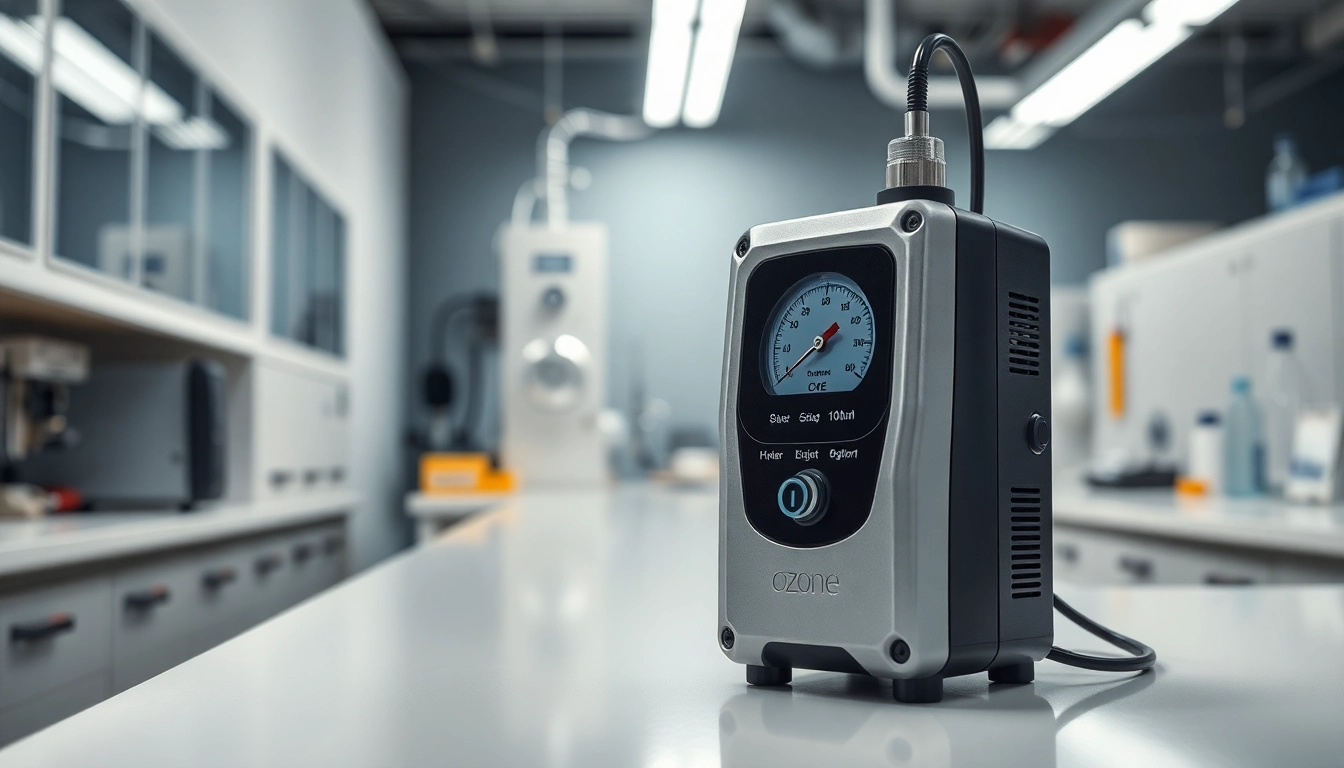Understanding Ozone Gas Detection
Ozone gas, while beneficial in the upper atmosphere for blocking harmful UV radiation, can pose serious health risks when present at ground level. Given its reactive nature, monitoring ozone levels is crucial across various sectors. This is where an ozone gas detector plays a vital role. These specialized detectors allow industries to ensure safety, comply with regulations, and maintain optimal environmental conditions.
What is an Ozone Gas Detector?
An ozone gas detector is a device designed to detect and measure concentrations of ozone gas in the environment. These detectors serve both indoor and outdoor applications, offering essential insights into air quality and safety. The technology behind ozone detection has evolved significantly, incorporating advanced sensors that provide accurate, real-time readings.
Importance of Ozone Detection in Various Industries
The importance of ozone detection spans numerous industries. In healthcare, ozone levels must be monitored to protect patients and staff in environments where ozone is used for disinfection. In agriculture, excessive ozone can damage crops, necessitating the need for accurate monitoring tools. Additionally, industrial facilities that utilize ozone in processes must adhere to environmental regulations, making compliant detection systems vital for operational integrity.
How Ozone Gas Detectors Work
Ozone gas detectors typically employ a sensory mechanism that reacts with ozone molecules, generating an electrical signal proportional to the concentration of ozone present. This process may involve various technologies such as electrochemical sensors or UV photometry, where the spectrum of UV light is altered by the presence of ozone, thus enabling quantification of gas levels.
Types of Ozone Gas Detectors
Electrochemical Sensors: An Overview
Electrochemical sensors are among the most commonly used types of ozone detectors. They operate on the principle of an electrochemical reaction occurring when ozone gas interacts with an electrode, resulting in a measurable change in electric current. These sensors are known for their sensitivity and relatively low cost, making them popular for personal safety in industry-spanning applications.
UV Absorption Ozone Detectors
UV absorption detectors use a method that involves passing UV light through a sample chamber. Ozone molecules absorb specific wavelengths of UV light, causing a measurable drop in light intensity. This technique is particularly valued for its accuracy and reliability over a broader range of ozone concentrations, making it suitable for environmental monitoring.
Comparison of Different Ozone Gas Detector Types
When comparing various types of ozone gas detectors, it is essential to consider factors such as detection range, sensitivity, response time, and environmental conditions. While electrochemical sensors may excel in cost-effectiveness and ease of use, UV absorption detectors provide enhanced accuracy and stability over the long term. The choice of detector often depends on the specific application and requirements of the monitoring environment.
Applications of Ozone Gas Detectors
Environmental Monitoring and Safety
Ozone detection is crucial for maintaining environmental safety. This includes monitoring air quality in urban areas, where ozone can exceed safe levels due to pollution. Municipal authorities and environmental agencies deploy ozone detectors to gauge air quality indices, informing the public and guiding policy decisions aimed at reducing pollution exposure.
Ozone Gas Detection in Indoor Air Quality
Indoor air quality (IAQ) is significantly affected by ozone levels, especially in spaces where cleaning and disinfecting are common. High concentrations of indoor ozone can lead to respiratory issues and other health problems. Ozone gas detectors help monitor and maintain acceptable levels of ozone in indoor environments, ensuring safety for occupants.
Industrial Applications: Ensuring Compliance
Industries that utilize ozone for sanitation, processing, or disinfection must ensure compliance with health and safety regulations, which often mandate the installation of ozone detectors. These devices provide continuous monitoring, enabling businesses to respond promptly to exceedances in ozone levels, thus protecting workers and minimizing liability.
Best Practices for Using Ozone Gas Detectors
Regular Calibration and Maintenance
For optimal performance, regular calibration and maintenance of ozone gas detectors are essential. Calibration ensures that the detection equipment provides accurate readings and is aligned with recognized standards. Users should establish a routine maintenance schedule, replacing sensors as necessary and ensuring that all protective measures are in place.
Training Personnel on Ozone Safety
Training personnel on ozone safety practices is a critical component of effective ozone monitoring. Employees should be educated on the health risks associated with ozone exposure, how to operate detection equipment properly, and appropriate responses to alarms. This proactive approach fosters a culture of safety and compliance within the workplace.
Interpreting Ozone Detection Data
Interpreting data from ozone gas detectors is a skill that can greatly influence decision-making. Users must be savvy in understanding data outputs, recognizing trends over time, and deriving actionable insights from real-time measurements. Establishing alert systems based on these metrics can be a significant asset in managing ozone-related risks effectively.
Future Trends in Ozone Detection Technology
Innovations in Ozone Detection Sensors
The field of ozone detection is witnessing rapid advancements in sensor technology. Innovations such as miniaturized sensors with enhanced sensitivity and faster response times are making detection more accessible and efficient. The integration of new materials and nanotechnology holds promise for creating more responsive ozone detectors that can operate in diverse conditions.
Integration with IoT for Real-Time Monitoring
The integration of Internet of Things (IoT) technology into ozone detection systems is transforming real-time monitoring capabilities. IoT-enabled ozone detectors can relay data instantaneously to cloud-based platforms, allowing stakeholders to track air quality remotely and make quick data-driven decisions. This connectivity enhances operational efficiency and safety through better monitoring protocols.
The Role of AI in Ozone Gas Detection
Artificial intelligence is beginning to play a vital role in ozone gas detection. AI algorithms can analyze vast amounts of data collected from ozone detectors, identifying patterns and predicting potential exposure incidents before they occur. By leveraging machine learning, these systems can become smarter over time, enhancing their predictive capabilities and offering insights that traditional methods may overlook.



